Figures & data
Figure 1. (a–b) Preparative CEX chromatogram and deconvoluted masses for homo- and heterodimers of casirivimab and imdevimab from SEC-UV-MS analysis of enriched fractions. Although heterodimers were detected within fractions F3-F6 (gray shaded region), high charge heterogeneity among dimer species complicated the enrichment. (c–d) Preparative MMC chromatogram and deconvoluted masses from SEC-UV-MS analysis of enriched fractions. Heterodimers were detected specifically in MMC fraction F5, which was subjected to additional purification.
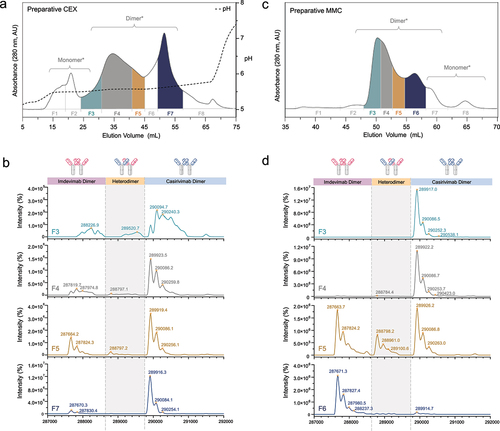
Table 1. Summary of strategies for heterodimer enrichment.
Figure 2. Purification of heterodimers from REGEN-COV®. (a) A three-step enrichment process was required to enrich heterodimers from trace amounts (<0.05%) to > 55% purity. (b) From the initial preparative SEC enrichment, a total dimer abundance of ~ 88% was achieved. (c) By mixed-mode chromatography (MMC), the total dimer sample partitioned into four specific dimeric peaks (shaded blue region). The casirivimab and imdevimab monomers exhibited differential hydrophobicity and could be baseline-resolved using this resin. The final heterodimer sample exhibited a purity of ~ 67% based on this analytical method. (d) The analytical HIC method suggested that heterodimers comprise up to 76% of the total sample; this value may be slightly overestimated due to co-elution of imdevimab monomer.
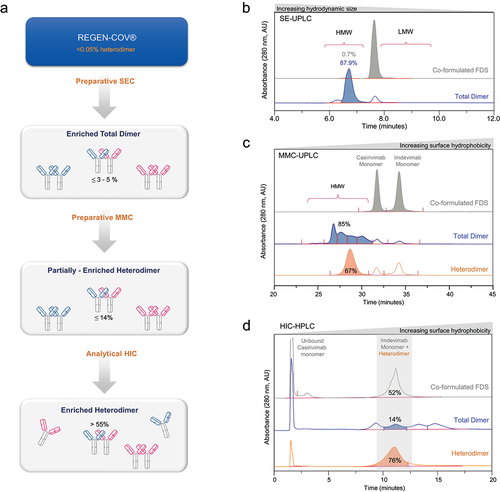
Figure 3. Analysis of the dimer peak by native SEC-UV-MS reveals successful enrichment of heterodimer. (a) UV spectrum for deglycosylated enriched heterodimer. (b) Deconvoluted masses corresponding to the dimer region of (a) demonstrates that ~ 75% of the deconvoluted MS signal corresponds to heterodimer with ~ 12–13% each contribution from each homodimer.
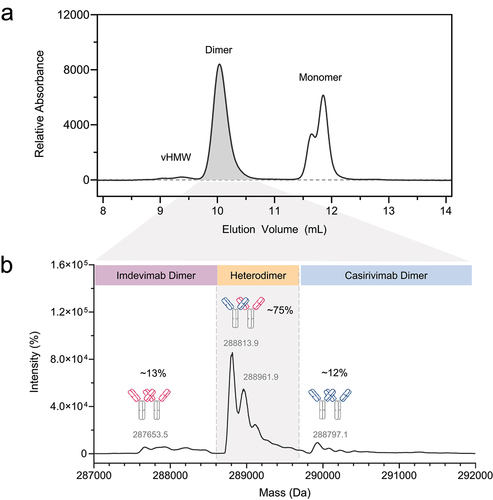
Figure 4. Relative potencies of REGEN-COVⓇ samples by (a–b) pseudovirus neutralization and (c–d) ADCC assays from a single representative data set. Values represent the average relative potency calculated from four separate data sets.
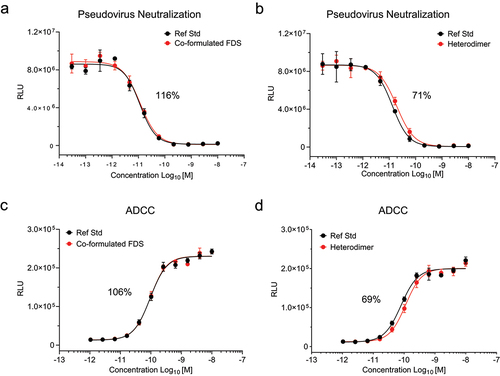
Table 2. Relative potencies of individual and co-formulated REGEN-COVⓇ antibodies by pseudovirus neutralization and ADCC assays.
Table 3. In vitro binding parameters of enriched individual REGEN-COVⓇ monomers and co-formulated REGEN-COVⓇ samples using surface plasmon resonance (SPR) spectroscopy.
Figure 5. Stability assessment of enriched total dimer and heterodimers from REGEN-COV®. (a) Co-formulated REGEN-COVⓇ, enriched total dimers, and enriched heterodimer were incubated at 37°C and subjected to analytical MMC-FLR-UPLC. (b) Example MMC chromatograms at t = 0 and t = 14 days for each sample. Monomer and dimer peaks are shaded. (c) Peak area quantitation of monomer, dimer, very high molecular weight (vHMW) species, and low molecular weight (LMW) species for each sample throughout the time course based on MMC-FLR-UPLC. Each data point represents the average of three replicate measurements. Dimer peaks were below quantitation in the co-formulated control sample due to heterogeneity of the dimer subpopulations. Results indicate that most enriched dimer forms are partially dissociable, including the heterodimer (right).
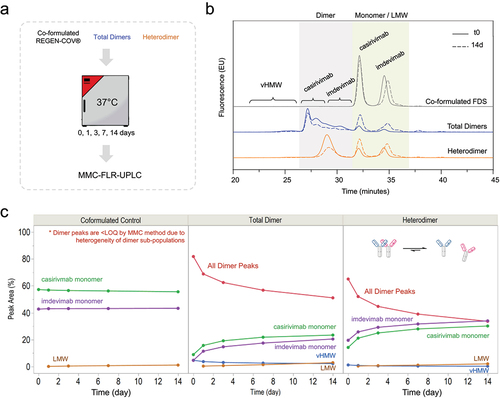
Table 4. Comparison of dimer stability parameters for enriched total dimer and enriched heterodimer samples during prolonged 37°C storage.
